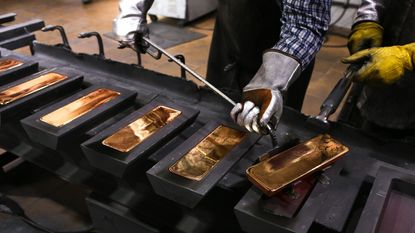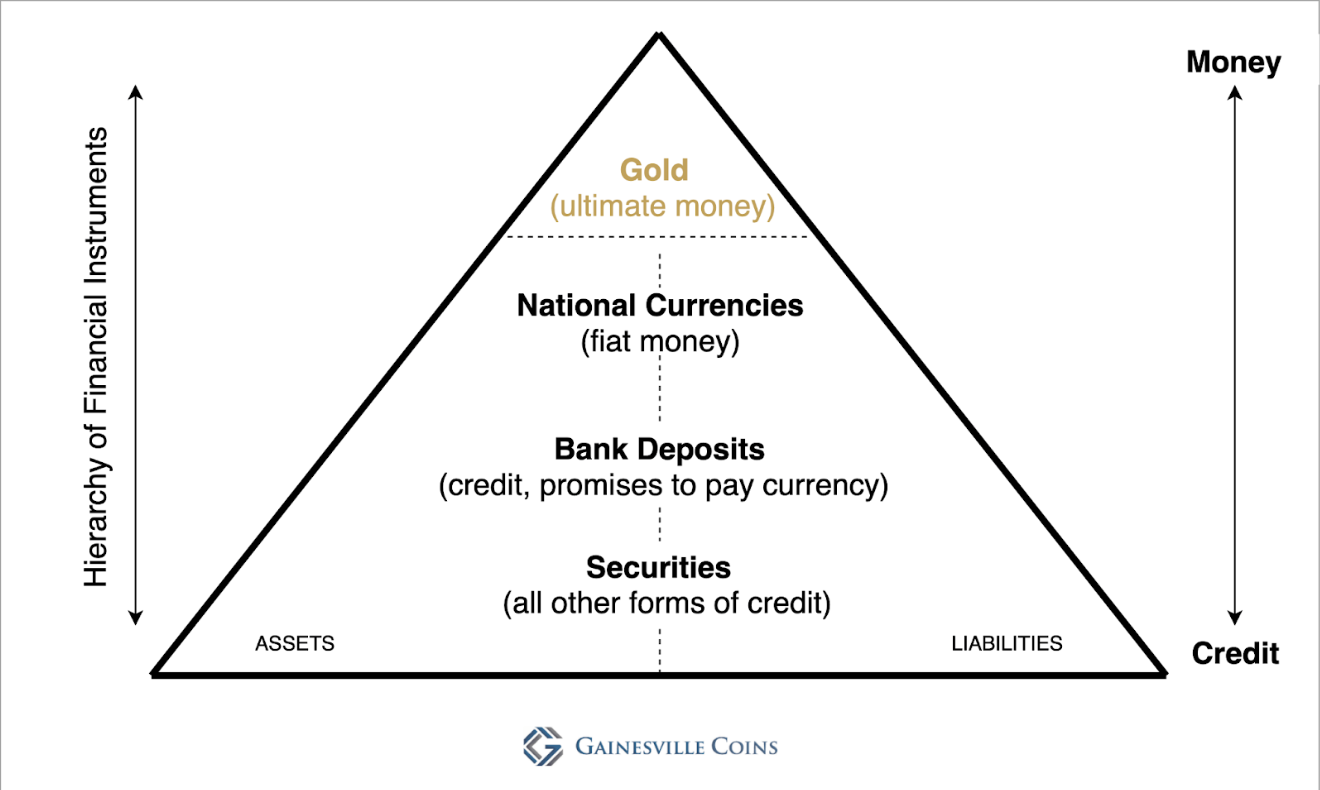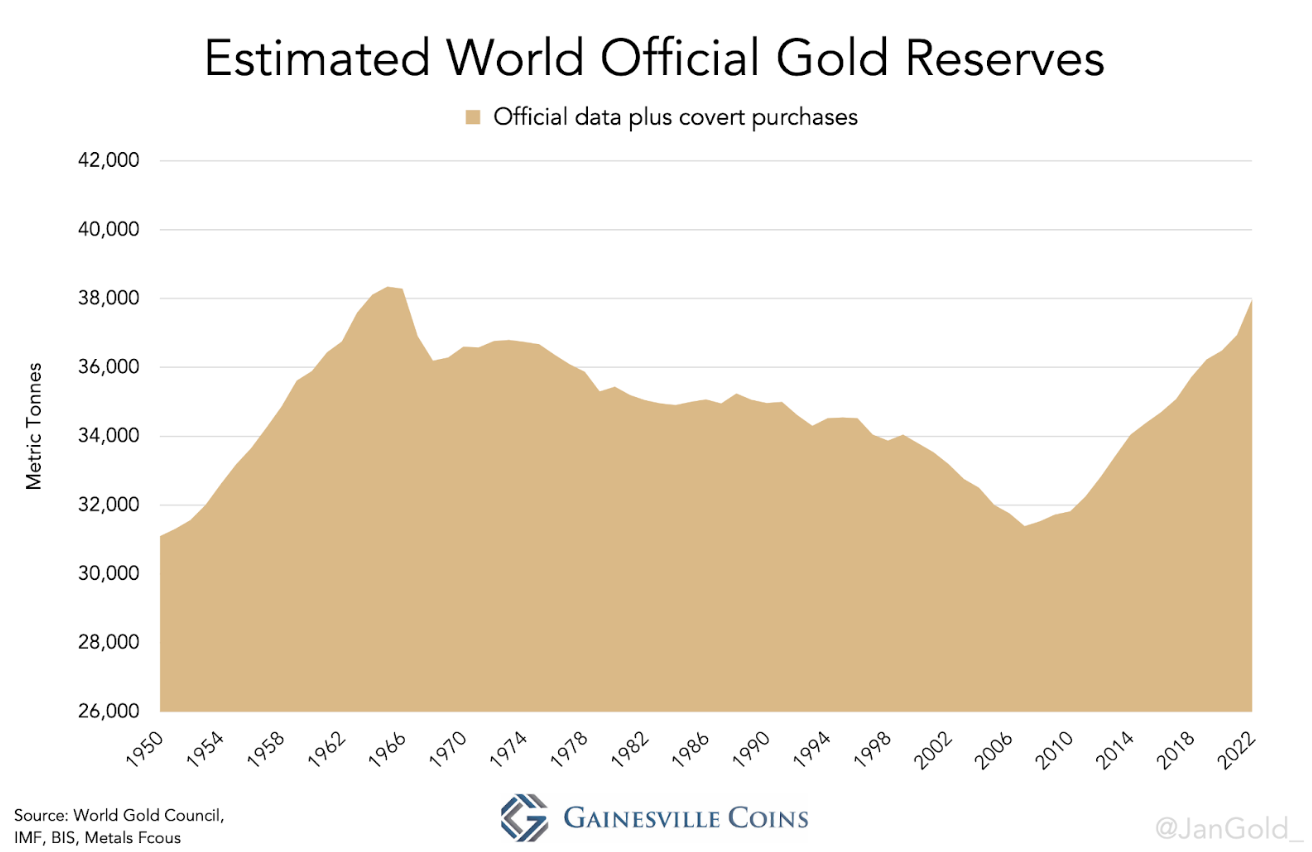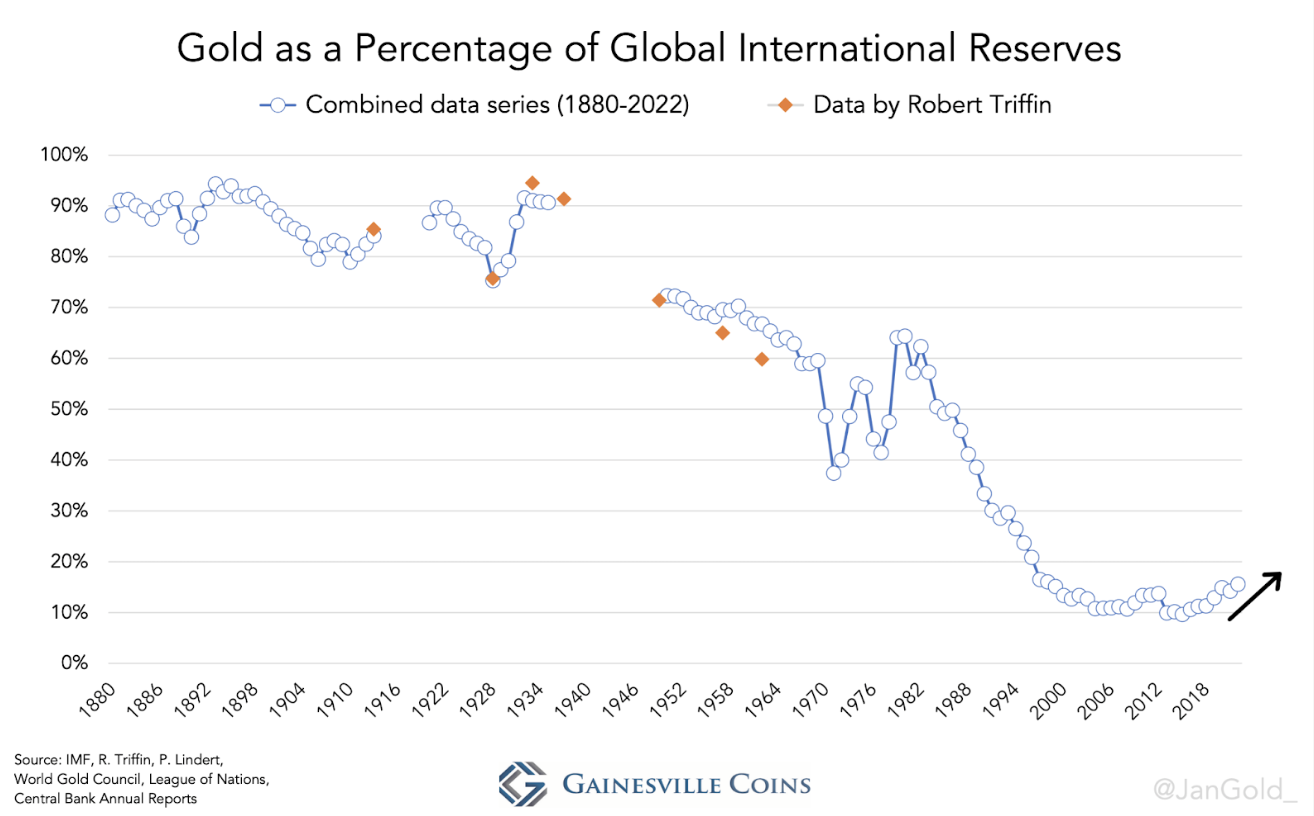The gold price hits a high – there’s still time to buy
Gold closed at its highest ever level on Friday, but the price could keep rising as demand grows, argues Dominic Frisby.


The gold price printed its highest ever weekly close on Friday.
What do new highs usually lead to? Yup. More new highs.
Is it too late to buy? Nope.
Subscribe to MoneyWeek
Subscribe to MoneyWeek today and get your first six magazine issues absolutely FREE

Sign up to Money Morning
Don't miss the latest investment and personal finances news, market analysis, plus money-saving tips with our free twice-daily newsletter
Don't miss the latest investment and personal finances news, market analysis, plus money-saving tips with our free twice-daily newsletter
Should you own some? Yup. Everyone should own some gold.
Put 5% of your net worth into gold and hope it doesn’t go up. That’s the old Wall Street adage that I am forever quoting, and I quote it again today.
Here are my latest thoughts on gold and the latest developments in the Great Unravelling.
The de-dollarisation trend continues
For the record, gold’s all-time high was $2,089. That came in August 2020, amidst the Covid money-printing bonanza. Get past that level and there really will be a lot of noise.
I have, as long time readers - or should I say sufferers? - will know, been wittering on about de-dollarisation since more or less the dawn of time. But the de-dollarisation narrative really seems to have taken hold these past few weeks and hit the mainstream.
Just this morning I read that French President, Emmanuel Macron, while in China at the weekend, said to President Xi. “I want to take the opportunity to insist on one point: we should not depend on the extraterritoriality of the US dollar.”
We can quibble over whether extraterritoriality is even a word, but the gist of his statement is pretty clear and it comes on the back of deals China has made in recent weeks with Russia, Brazil and Saudi Arabia to bypass the dollar and trade using the Chinese yuan.
At the “Russian Davos” – the St. Petersburg International Economic Forum – in New Delhi a fortnight ago, Russia’s State Duma Dep Chairman Alexander Babakov stated that a BRICS alliance was working on a new currency secured by gold and other commodities, including rare-earth elements.
Tucker Carlson of Fox News delivered an impassioned monologue on the subject last week, and it went viral garnering millions of views. “If you want the rest of the world to trust your currency, the last thing you would do is use it as a weapon or print too much of it”, he said.
“But if Mitch McConnell and Joe Biden and the rest of these reckless leaders have their way, an increasing number of countries will do what so many have already done, which is begin to reject the U.S. dollar and what will happen then?
“Well, all those dollars will come home and the value of our currency will plummet even further, and that will lead to poverty across the United States, and that will lead to the typical political and cultural volatility that inevitably follows economic collapse, disaster, and we've seen it before”.
It’s classic goldbug erotica. He even cited the fact that nobody knows how much gold is in Fort Knox because it has not been audited for generations.
Even Elon Musk has been tweeting about de-dollarisation, exporting inflation and the likelihood of bank runs accelerating.
I must say, I get a little bit concerned as narratives mature. The more widespread and well formed the story, the more likely it is about to run out of steam.
That said, the trend is strong and it’s up.
Gold miners are extraordinarily cheap
Another concern I have about this move is that woeful performance of the gold miners. In a trusty bull market, you want to see the miners leading the gold price higher. They are doing no such thing. The juniors (as measured by benchmark ETF, GDXJ) are a good 35% off their 2020 highs, and a quite astounding 70% off their 2011 highs at the climax of the last bull market.
One explanation for this is that their input costs – energy and equipment – are rising more than the gold price is rising, which impacts their profitability. Even so, you want to see miners behaving better than this. Maybe a break-out to new highs will give them the boost they need. Maybe they are forecasting a correction. Either way, you can’t argue with the fact that they are extraordinarily cheap.
Gold reserves are rising
I have written before about bearer assets – assets that are nobody’s liability. Gold is the most famous example.
Gold has existed since before the solar system was formed and it will exist long after the human race has shuffled off this mortal coil. It is Nature’s money, "a child of God,” according to an Ancient Greek lyric, and “neither moth nor rust devoureth it.” Spandau Ballet went with the rather more catchy “indestructible”.
“Money is gold, and nothing else,” the financier JP Morgan once said (this is one of the most misquoted lines on the internet - here we quote him correctly). Everything else, as James Turk argues in his latest book Money and Liberty, be it dollar, pound, silver, or crypto, even the mackerel that sometimes changes hands in American prisons, is currency. Most currency is credit. Money in the bank, as few seem to realise, is credit.
That is why gold sits at the top of the hierarchy of financial instruments, as we see from this slide from analyst Jan Nieuwenhuijs.

In the same article, in which he makes a case for $8,000 gold, Nieuwenhuijs presents international reserves. You can see how central banks have been increasing their reserves since the financial crisis of 2008. You can also see that accumulation has accelerated this past year, when central banks have been buying gold at the fastest rate since the 1960s.

Perhaps more significantly, it’s not just international gold reserves that are increasing, but, since 2018, gold holdings relative to other assets have also turned up.

We are nowhere near the Bel Epoq levels where this chart begins, but the fact that we have turned up is I think significant.
What is being planned?
Moreover, the above data all assume China has been transparent about its gold holdings, which it has not been. China’s gold holdings are, I have argued, probably ten times higher than they say they are.
I keep saying it. We are in interesting times. Own some gold. And hope it doesn’t go up.
Dominic Frisby (“mercurially witty” – the Spectator) is the world’s only financial writer and comedian. He is MoneyWeek’s main commentator on gold, commodities, currencies and cryptocurrencies. He is the author of the books Bitcoin: the Future of Money? and Life After The State. He also co-wrote the documentary Four Horsemen, and presents the chat show, Stuff That Interests Me.
His show 2016 Let’s Talk About Tax was a huge hit at the Edinburgh Festival and Penguin Random House have since commissioned him to write a book on the subject – Daylight Robbery – the past, present and future of tax will be published later this year. His 2018 Edinburgh Festival show, Dominic Frisby's Financial Gameshow, won rave reviews. Dominic was educated at St Paul's School, Manchester University and the Webber-Douglas Academy Of Dramatic Art.
You can follow him on Twitter @dominicfrisby
-
-
 Investment trust discounts hit 2008 levels. Here’s how to profit
Investment trust discounts hit 2008 levels. Here’s how to profitInvestment trust discounts have risen to levels not seen since 2008, here are three trusts looking to buy to profit.
By Rupert Hargreaves Published
-
 A luxury stock to buy at a high street price
A luxury stock to buy at a high street priceInvestors wrongly consider Watches of Switzerland a high-street outlet.
By Dr Matthew Partridge Published
-
 Investing in wine: how Cru Wine is reaching new audiences
Investing in wine: how Cru Wine is reaching new audiencesTips Gregory Swartberg, founder of fine wine specialist Cru Wine, talks to Chris Carter about how to start a wine collection
By Chris Carter Published
-
 Small companies with big potential
Small companies with big potentialMichael Taylor of Shifting Shares reviews his 2023 picks and highlights more promising minnows.
By Michael Taylor Published
-
 The MoneyWeek portfolio of investment trusts – July 2023 update
The MoneyWeek portfolio of investment trusts – July 2023 updateTips A decade ago we set up the MoneyWeek portfolio of investment trusts. They remain a compelling long-term bet says Rupert Hargreaves
By Rupert Hargreaves Published
-
 Women lead the way with ethical investments
Women lead the way with ethical investmentsDemand for more ethical investments has soared – and women are more likely to opt for them. Annabelle Williams, personal finance specialist at Nutmeg, takes a look at why.
By Annabelle Williams Published
-
 BoE: Mortgage payments to rise by £220 a month for households
BoE: Mortgage payments to rise by £220 a month for householdsMillions of households can expect a mortgage spike of around £200 a month - and some may even reach a extra £1,000 a month, the Bank of England warns
By Marc Shoffman Published
-
 What happened to Thames Water?
What happened to Thames Water?Thames Water, the UK’s biggest water company could go under due to mismanagement and debt. We look into how the company got itself into this position, and what investors should expect.
By Simon Wilson Last updated
-
 Where to invest in the metals that will engineer the energy transition
Where to invest in the metals that will engineer the energy transitionA professional investor tells us where he’d put his money. This week: John Ciampaglia, manager of the Sprott Energy Transition Materials UCITS ETF.
By Nicole García Mérida Published
-
 How investors can profit from high food prices
How investors can profit from high food pricesThe latest furore over grocery prices will die down, says David Stevenson. But the long-term outlook for soft commodities remains bullish. These are the stocks investors can buy to profit from high food prices.
By David J Stevenson Published









